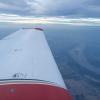Mooney down in Ocala FL
-
Members Online
- 47U
- skykrawler
- rklems
- KSMooniac
- Crawfish
- DonMuncy
- GeeBee
- Mark Cline
- 802flyer
- QWright
- Niko182
- bencpeters
- Ospeed
- Shadrach
- Nick Lombard
- TangoTango
- FlyingDude
- Utah20Gflyer
- Aerodon
- Deb
- Skyland
- Jeph357
- flyingscot
- redbaron1982
- Hall Liu
- PT20J
- 65MooneyPilot
- TBILL
- caractacuspdoom
- acekng1
- 201er
- jeremyc209
- Gary D
- MooneyTunes
- unicom


Recommended Posts